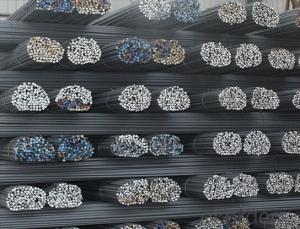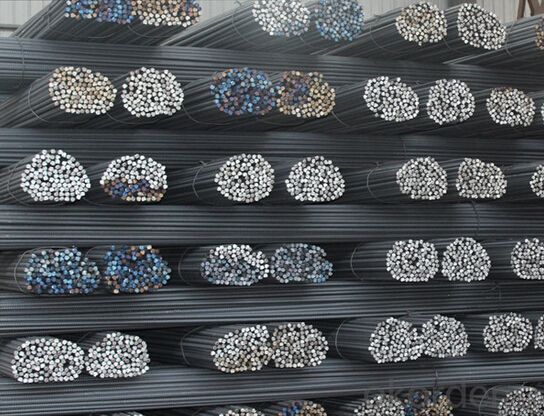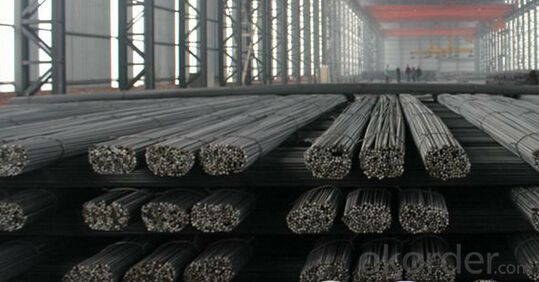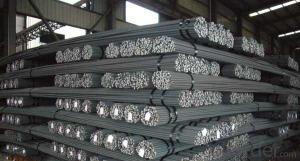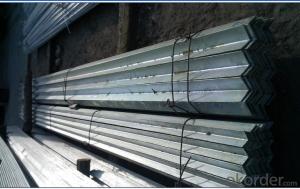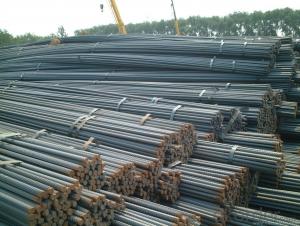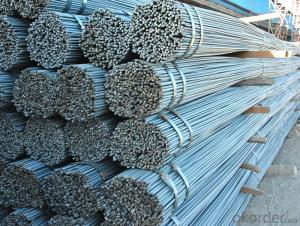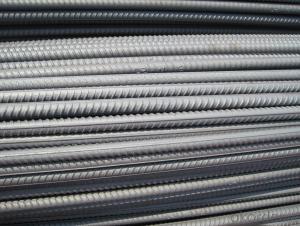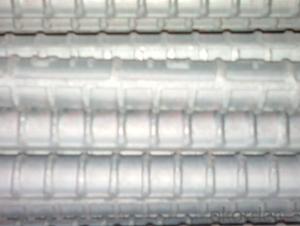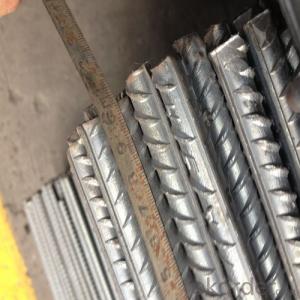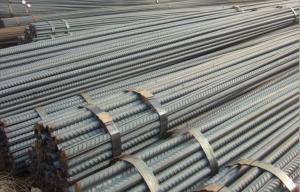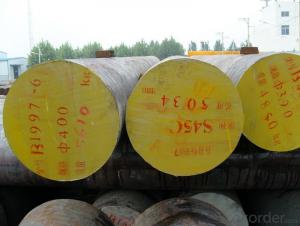ASTM A706, 460B,500B,GR40,GR50 Deformed Steel Bar
- Loading Port:
- Tianjin
- Payment Terms:
- TT OR LC
- Min Order Qty:
- 100 m.t.
- Supply Capability:
- 10000 m.t./month
OKorder Service Pledge
Quality Product, Order Online Tracking, Timely Delivery
OKorder Financial Service
Credit Rating, Credit Services, Credit Purchasing
You Might Also Like
Specification
Standard:
AISI,ASTM,JIS,GB,BS,DIN,API,EN
Technique:
Hot Rolled,Cold Rolled,Cold Drawn,ERW,Forged,Saw,Extruded,EFW,Spring
Shape:
U Channel,Square,C Channel,Hexagonal,Round,Rectangular,Oval,LTZ
Surface Treatment:
Galvanized,Coated,Copper Coated,Color Coated,Oiled,Dry,Chromed Passivation,Polished,Bright,Black,PVDF Coated
Steel Grade:
Q195,Q215,Q235,Q215B,Q235B,RHB335,HRB400,200 Series,300 Series,400 Series,600 Series,SS400-SS490,10#,20#,A53(A,B)
Certification:
ISO,SGS,BV,IBR,RoHS,CE,API,BSI,UL
Thickness:
6-34mm
Width:
6-34mm
Length:
12m
Outer Diameter:
6-34mm
Net Weight:
10kg
Packaging:
seaworkthy packaging
ASTM A706, 460B,500B,GR40,GR50 Deformed Steel Bar
Details of the ASTM A706, 460B,500B,GR40,GR50 Deformed Steel Bar
| Standard & Grade: | GB1499-98 : HRB335,HRB400,HRB500 |
| BS4449-1997 : GR460,GR500 | |
| CAN/CSA-G30.18-M92 : 400W | |
| ASTM A615 : Gr.40, Gr.60 | |
| Diameter: | 6mm;8mm;10mm;12mm;14mm;16mm;18mm;20mm;22mm;25mm;28mm;30mm;32mm;35mm;40mm |
| Length: | 6m,9m,12m |
| Packing: | Bundle packing |
| Origin: | China |
| Application: | Construction,Road,Machinery processing,Welding fields. |
| Delivery time: | 10-25 days |
| Shipment: | By bulk vessel or Container |
| Documents: | Mill Test Certificate,Commercial Invoice,Packing List,Certificate of Origin |
Company Introduction of the ASTM A706, 460B,500B,GR40,GR50 Deformed Steel Bar
CNBM International Corporation is the most import and export platform of CNBM group(China National Building Material Group Corporation) ,which is a state-owned enterprise, ranked in 270th of Fortune Global 500 in 2015.
With its advantages, CNBM International are mainly concentrate on Cement, Glass, Iron and Steel, Ceramics industries and devotes herself for supplying high quality series of refractories as well as technical consultancies and logistics solution.

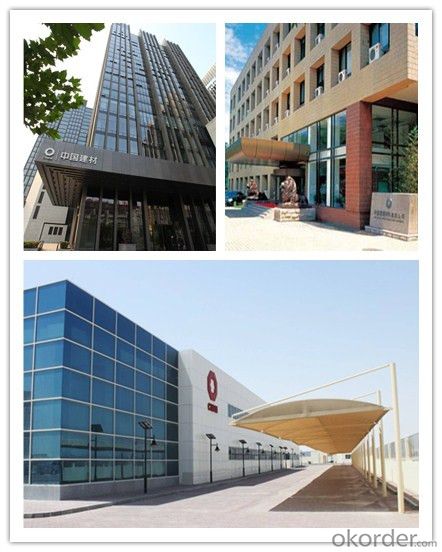
Packaging & Delivery of the ASTM A706, 460B,500B,GR40,GR50 Deformed Steel Bar
| Packaging Detail | Sea worthy packing /as per customer's packing instruction |
| Delivery Detail | 15 ~ 40 days after receiving the deposit |
FAQ
| Are you a trading company or manufacturer? | Manufacturer |
| What’s the MOQ? | 1000m2 |
| What’s your delivery time? | 15-20 days after downpayment received |
| Do you Accept OEM service? | Yes |
| what’s your delivery terms? | FOB/CFR/CIF |
| What's the Payment Terms? | 30% as deposit,70% before shipment by T/T |
| Western Union acceptable for small amount. | |
| L/C acceptable for large amount. | |
| Scrow ,Paybal,Alipay are also ok | |
| Why choose us? | Chose happens because of quality, then price, We can give you both. Additionally, we can also offer professional products inquiry, products knowledge train (for agents), smooth goods delivery, excellent customer solution proposals. |
| What's your available port of Shipment? | Main Port, China |
| What’s your featured services? | Our service formula: good quality+ good price+ good service=customer's trust |
| Where are your Market? | Covering more than 160 countries in the world |
- Q: What is the purpose of using steel rebars in concrete structures?
- The purpose of using steel rebars in concrete structures is to enhance the overall strength and durability of the structure. Concrete, while excellent in compression, is weak in tension. By incorporating steel rebars into the concrete, the structure is able to resist tensile forces and prevent cracking or failure. Steel rebars, which are typically made of carbon steel, are strong and have high tensile strength. They are placed within the concrete forms before pouring, creating a reinforced concrete structure. When subjected to tensile forces, the concrete transfers the load to the steel rebars, which can resist the pulling or stretching forces. This reinforcement helps to distribute the load more evenly, preventing localized stress points and reducing the risk of structural failure. In addition to providing tensile strength, steel rebars also help to control cracks in concrete structures. As concrete shrinks and expands due to temperature changes or drying, it is susceptible to cracking. The presence of steel rebars helps to limit the width and extent of these cracks, ensuring the structural integrity and longevity of the concrete. Furthermore, steel rebars can improve the resistance of concrete structures to seismic activity or other dynamic forces. The flexible nature of steel rebars allows them to absorb and dissipate energy during earthquakes or other vibrations, reducing the risk of collapse. Overall, the purpose of using steel rebars in concrete structures is to reinforce and strengthen the concrete, providing additional tensile strength, controlling cracks, and enhancing the overall durability and resilience of the structure.
- Q: What is the maximum length of straight steel rebars available in the market?
- The maximum length of straight steel rebars available in the market typically ranges from 40 feet to 60 feet, depending on the supplier and regional availability.
- Q: What are the standards and specifications for steel rebars?
- International organizations such as ASTM and ISO primarily establish the standards and specifications for steel rebars, also known as reinforcing bars. These standards guarantee that steel rebars meet specific requirements for strength, durability, and dimensional accuracy. ASTM A615 is one of the most commonly used standards for steel rebars. It covers deformed and plain carbon-steel bars for concrete reinforcement. This standard sets the minimum yield strength, tensile strength, and elongation properties for various rebars grades, including Grade 40, Grade 60, and Grade 75. It also outlines the mechanical properties, chemical composition, and bending properties of rebars. Aside from ASTM A615, there are other standards that provide specifications for steel rebars. ASTM A706, for instance, focuses on low-alloy steel bars for concrete reinforcement. This standard ensures that rebars possess improved weldability and ductility to withstand seismic forces and other dynamic loads. ISO 15630 is another significant standard that addresses steel for concrete reinforcement. It provides specifications for hot-rolled and cold-worked steel bars, as well as welded fabric and lattice girders. ISO 15630 outlines the mechanical properties, chemical composition, and dimensional tolerances of rebars. Furthermore, regional or national organizations also establish their own standards for steel rebars. For instance, the BSI has developed the BS 4449 standard, which specifies the requirements for carbon steel rebars used in concrete reinforcement in the United Kingdom. Similarly, the ISI has set the IS 1786 standard for cold-twisted steel bars used in concrete reinforcement in India. In conclusion, the standards and specifications for steel rebars ensure that these construction materials possess the necessary strength, ductility, and other properties required for reinforcing concrete structures. By adhering to these standards, manufacturers, engineers, and construction professionals can ensure the safety and durability of reinforced concrete projects.
- Q: What is the role of steel rebars in preventing shrinkage cracks in concrete?
- Steel rebars play a crucial role in preventing shrinkage cracks in concrete. Shrinkage cracks occur in concrete due to the natural drying and curing process, as the water content in the concrete evaporates and the material contracts. These cracks can compromise the structural integrity and durability of the concrete. The inclusion of steel rebars in concrete helps to mitigate shrinkage cracks by providing tensile strength. While concrete is strong in compression, it is weak in tension. During the drying process, the rebars act as reinforcement, resisting the tensile forces that develop as the concrete shrinks. This prevents the formation and propagation of shrinkage cracks. The rebars act as a framework or skeleton within the concrete, distributing the tensile stresses and preventing them from concentrating in one area. By restraining the shrinkage of the concrete, the rebars help to maintain the overall integrity and stability of the structure. In addition, steel rebars also enhance the overall strength and load-bearing capacity of the concrete. By adding reinforcement, the concrete becomes more resistant to bending, shearing, and other forces that can lead to cracking. Furthermore, the presence of rebars in concrete also helps to control the width and depth of any cracks that may still occur. By confining and limiting the size of cracks, the rebars prevent them from expanding and potentially compromising the structural integrity of the concrete. In summary, steel rebars play a crucial role in preventing shrinkage cracks in concrete by providing tensile strength, distributing the stresses, enhancing overall strength, and controlling the size of cracks. Their inclusion in concrete ensures a more durable and reliable structure, minimizing the risk of damage and maintaining the longevity of the concrete.
- Q: How do steel rebars prevent cracking in concrete?
- Steel rebars prevent cracking in concrete by providing additional tensile strength to the composite material. As concrete is strong in compression but weak in tension, the steel rebars act as reinforcement and resist the tensile forces that can cause cracking. By distributing the applied loads more evenly throughout the structure, rebars help to enhance the structural integrity and durability of the concrete, preventing the formation and propagation of cracks.
- Q: How do steel rebars affect the thermal properties of a structure?
- Steel rebars, which are commonly used in reinforced concrete structures, can have a significant impact on the thermal properties of a building or structure. Firstly, steel has a higher thermal conductivity compared to concrete. This means that when steel rebars are embedded within concrete, they can act as thermal bridges, allowing heat to transfer more easily through the structure. This can result in increased heat loss during colder months and increased heat gain during warmer months, leading to higher energy consumption for heating and cooling. Secondly, steel rebars can affect the thermal expansion and contraction of the structure. Steel has a higher coefficient of thermal expansion compared to concrete, meaning it expands and contracts more with changes in temperature. This differential movement between the steel rebars and the surrounding concrete can lead to cracks and structural deformations, which can compromise the overall thermal performance of the structure. Furthermore, steel rebars can also influence the moisture behavior of a structure. Steel has a higher thermal conductivity than concrete, as mentioned earlier, but it also has a higher electrical conductivity. This electrical conductivity can promote the corrosion of steel rebars when they come into contact with moisture or water. Corrosion can lead to the formation of rust, which expands and can further damage the surrounding concrete. This can result in increased moisture ingress, compromising the insulation properties of the structure and potentially leading to mold growth and other moisture-related issues. In conclusion, steel rebars have both direct and indirect impacts on the thermal properties of a structure. They can act as thermal bridges, affecting heat transfer, and their differential thermal expansion and corrosion potential can compromise the overall thermal performance and moisture behavior of the structure. Proper design, insulation, and corrosion protection measures should be taken into consideration to mitigate these effects and ensure optimal thermal performance.
- Q: How can the quality of steel rebars be tested?
- To ensure the strength and reliability of steel rebars, there are various methods available for testing their quality. Some commonly used techniques include: 1. Conducting a visual inspection to identify any visible defects like surface cracks, unevenness, or corrosion that may impact performance. 2. Analyzing the chemical composition of the rebars through spectroscopy or similar methods to ensure compliance with required standards. This analysis verifies the presence and percentage of elements such as carbon, manganese, and silicon. 3. Testing the rebars' tensile strength by subjecting a sample to tension until it fractures. The maximum force applied before breaking determines the tensile strength and helps identify weak spots or inconsistencies. 4. Evaluating the ductility of rebars through a bend test, bending them to a specific angle without any signs of cracking or fracture. This ensures the rebars can withstand bending and shaping during construction without compromising their structural integrity. 5. Using ultrasonic testing to detect internal flaws or defects within the rebars. This non-destructive method helps identify hidden cracks, voids, or inclusions that could weaken the rebars. 6. Determining the hardness of the rebars using the Rockwell or Brinell hardness test. This test measures the resistance of the rebar's surface to indentation, providing insight into its strength. 7. Subjecting the rebars to corrosion resistance testing, such as salt spray testing or electrochemical methods, to assess their resistance against rust and other types of corrosion. By combining these testing methods, manufacturers, construction companies, and engineers can ensure that steel rebars meet the required quality standards and can withstand the intended load and environmental conditions.
- Q: What is the role of steel rebars in ensuring occupant safety?
- Various structures, particularly buildings and infrastructure, rely on steel rebars to ensure occupant safety. These reinforced steel bars are commonly used in concrete construction to strengthen and prolong the lifespan of the structure. Ultimately, this safeguards the individuals residing or working within these structures. Steel rebars have a primary function of providing structural reinforcement to concrete elements like columns, beams, and slabs. By incorporating rebars into the concrete, the overall load-bearing capacity of the structure is greatly increased. This allows it to endure external forces and loads, significantly reducing the risk of collapse or structural failure that could harm the occupants. During seismic events, such as earthquakes, steel rebars play a crucial role in dissipating and distributing the energy exerted on the structure. The ductility and tensile strength of steel enable it to absorb and distribute seismic forces, minimizing the chances of a sudden structural failure. Consequently, occupants are protected from potential hazards associated with seismic activity. Additionally, steel rebars enhance the fire resistance of concrete structures. While concrete itself possesses good fire-resistant properties, the inclusion of steel rebars further strengthens this resistance. Steel has a high melting point and low thermal conductivity compared to other materials. This means that steel rebars can withstand high temperatures for an extended period, ensuring the building's structural integrity during a fire and providing occupants with a safe evacuation route. Furthermore, steel rebars contribute to the long-term durability and maintenance of the structure. They prevent cracks and minimize the effects of corrosion, maintaining the concrete's structural integrity over time. This ensures that occupants are not exposed to potential hazards caused by structural deterioration. In summary, the role of steel rebars in ensuring occupant safety is essential. They provide structural reinforcement, increase load-bearing capacity, enhance fire resistance, and contribute to the long-term durability of a structure. By incorporating steel rebars into concrete construction, the risk of collapse, structural failure, and other potential hazards is significantly reduced, ultimately creating a safe environment for occupants.
- Q: Can steel rebars be galvanized for added protection?
- Indeed, an additional protective measure can be taken for steel rebars by galvanizing them. Galvanization involves the application of a thin layer of zinc onto the surface of the steel rebar. This zinc coating serves as a sacrificial layer, effectively safeguarding the rebar against corrosion. It creates a barrier between the steel and its surroundings, effectively blocking moisture and other corrosive elements from penetrating the rebar's surface. Galvanized steel rebars are widely utilized in construction ventures, particularly in regions prone to corrosion, such as coastal areas or environments with high humidity levels. Through the galvanization process, the longevity and durability of the steel rebar are significantly enhanced, rendering it highly resistant to rust and corrosion.
- Q: How do steel rebars comply with building codes and regulations?
- Steel rebars comply with building codes and regulations by meeting specific requirements outlined in these codes. These requirements include the dimensions, strength, and quality of the rebars, as well as their placement and spacing within the concrete structures. Compliance is ensured through rigorous testing and certification processes, ensuring that the rebars meet the necessary standards for safety and structural integrity in construction projects.
Send your message to us
ASTM A706, 460B,500B,GR40,GR50 Deformed Steel Bar
- Loading Port:
- Tianjin
- Payment Terms:
- TT OR LC
- Min Order Qty:
- 100 m.t.
- Supply Capability:
- 10000 m.t./month
OKorder Service Pledge
Quality Product, Order Online Tracking, Timely Delivery
OKorder Financial Service
Credit Rating, Credit Services, Credit Purchasing
Similar products
Hot products
Hot Searches
Related keywords
